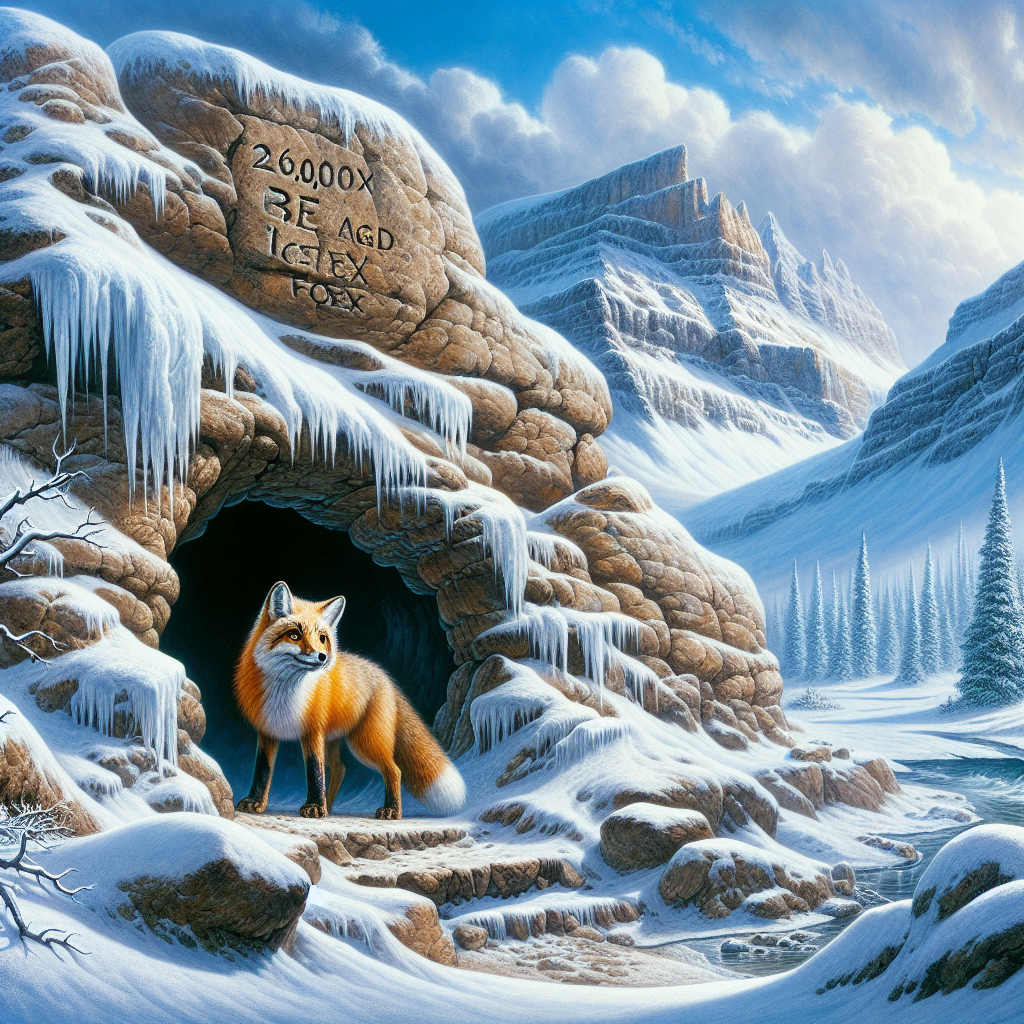26,000-Year-Old Ice Age Fox Skeleton Discovered in Utah Cave
In a remarkable find that echoes through time, researchers in Utah have unearthed a skeleton of a fox believed to be 26,000 years old from a cave in the Uinta Mountains. This extraordinary discovery not only sheds light on the fauna of the Ice Age but also prompts reflections on the enduring narratives of creation and preservation that resonate throughout history.
According to reports from multiple outlets, including ABC4, FOX 13 News, KJZZ, and Gephardt Daily, the fox skeleton was meticulously excavated by scientists who specialize in paleontology. The find has excited the scientific community, as it offers a rare glimpse into the ecosystems that existed during the Pleistocene epoch when mammoths roamed the earth and vast stretches were covered in ice.
As the researchers continue to analyze the remains, they emphasize the importance of this discovery in understanding prehistoric wildlife and how climate changes influenced their survival. Yet, there’s more to this story than just the science of ancient animal life.
From a biblical perspective, the discovery serves as a reminder of God’s creative power and the intricate tapestry of life He has woven over millennia. The Bible offers a view of creation that is interconnected and continually evolving, as emphasized in Genesis 1:31: “God saw all that he had made, and it was very good.” This verse invites reflection on the beauty and complexity of the natural world, showcasing how life from ancient eras still influences and teaches us today.
As this ancient fox skeleton takes its place in the annals of history, it reminds us of the fragility and magnificence of God’s creation. Just as scientists seek to understand the past, we are called to appreciate and care for the present world we inhabit. Every discovery, no matter how old, can inspire a greater appreciation for the life that exists around us, prompting us to live with purpose and reverence.
While the scientific community meticulously studies what these ancient remains reveal about evolution and extinction, we can embody the teachings of care and stewardship exemplified by Christ. Jesus taught us to value life and approach our surroundings with compassion (Matthew 6:26), echoing the truth that every creature has a role and a purpose in God’s creation.
This find may spark curiosity in many, inviting us to ponder not only the past but also our responsibilities in the present. As we reflect on the lessons from the ancient ice, let us raise a question: How can we, today, embrace stewardship over the beauty and diversity in our world, ensuring that future generations inherit a planet teeming with life and wonder?
In considering this remarkable find, may we draw inspiration to protect and cherish the environments we often take for granted, acknowledging that much like the ancient life that once roamed, our lives are woven into the grand narrative of creation.
Encouraging Takeaway: Take a moment to appreciate the intricate balance of life that surrounds you. As we delve deeper into the mysteries of our world, let’s remember that each discovery offers an opportunity to reflect on our roles as caretakers, echoing the biblical principles of stewardship and love for God’s creation.
Explore and dig up answers yourself with our BGodInspired Bible Tools! Be careful – each interaction is like a new treasure hunt… you can get lost for hours 🙂


